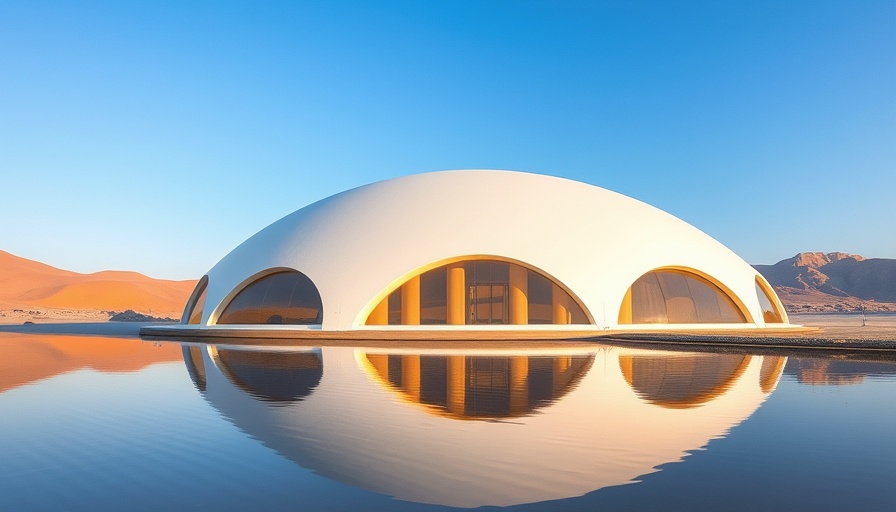
Rediscovering Domed Architecture in Remote Workspaces
As the world of work continues to evolve, so does the architecture that supports it. Domed buildings have made a resurgence, embodying not only aesthetic delight but also providing unique opportunities for creating comfortable and efficient remote workspaces. These structures are popping up globally, with their curved ceilings and open interiors that invite natural light, heralding a new era for digital nomads seeking both functional and inspiring environments.
Why Domes? Exploring the Ergonomics of Space
Research shows that architecture can significantly affect our mood and productivity. Domed architecture tends to offer a larger volume of space, contributing to an airy feeling that many traditional boxy offices lack. This openness can reduce feelings of confinement, promoting mental clarity and focus. A round space allows for effective sound distribution, ensuring conversations are more fluid and less interrupted. This shift can greatly enhance collaboration for remote teams.
Architectural Innovations: Benfits of Round Designs
With their unique structural benefits, domes are not just visually striking; they also embrace sustainability. Many modern domed buildings incorporate eco-friendly materials and designs, such as solar panels and natural ventilation systems. According to the recent roundup by Dezeen, several groundbreaking projects are emphasizing these elements, highlighting a commitment to wellness in the workplace.
The Human-Centric Approach: Health and Well-being in Design
For digital nomads, health and well-being are paramount. Ergonomics plays a vital role here. Workspaces that promote proper posture and allow for movement can help reduce fatigue and discomfort, making remote work more sustainable.
Domed structures naturally allow for a variety of layouts that facilitate movement. The openness not only provides space for ergonomic workstations but also invites opportunities for relaxation areas. Whether it’s a nook for mindfulness or an informal meeting zone, a dome can be designed to cater to diverse work-life needs.
Global Perspectives on Domed Architecture
From the gentle landscapes of Scandinavia to the vibrant cultures of the Middle East, the revival of domed architecture is a global movement. Each region brings its own influences, producing unique designs that respect local traditions while embracing modern needs. For instance, residential domes in Italy reflect historic styles while introducing multifunctionality, showcasing how architecture can evolve.
A New Era of Productivity: What This Means for You
As digital nomads become more prevalent, the spaces they inhabit will continue to adapt to their evolving needs. Recognizing the role building design plays in productivity, choosing a workspace that aligns with health and well-being will be crucial. Work environments that prioritize ergonomics through innovative architecture will likely lead to greater satisfaction and productivity.
Inspiration to Create Your Ideal Workspace
Feeling inspired? Now is the perfect time to rethink your workspace layout. Whether you're starting from a blank slate or revamping an existing area, consider aspects of dome architecture. Try to incorporate curved lines, soft lighting, and flexible layouts that enhance comfort without compromising functionality. Test different setups to see what resonates with your workflow.
By embracing the elegance and benefits of domed architecture, you can create an efficient, comfortable workspace that encourages creativity and productivity. It's not just about the structure itself, but how it transforms your work life. So, why not get started on your ergonomic journey today?
 Add Row
Add Row  Add
Add 




Write A Comment